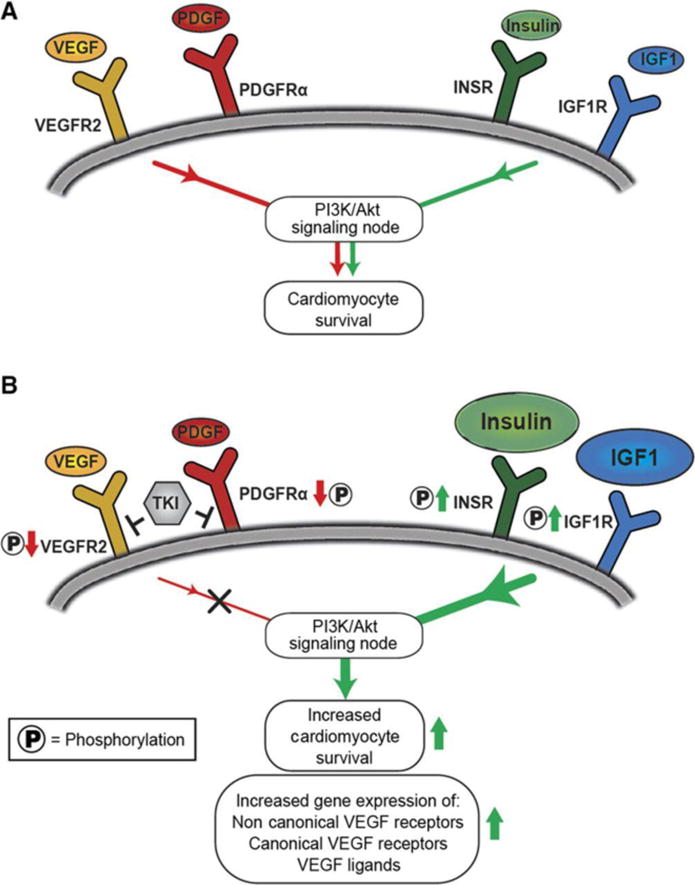IGF1 Target Analysis Report Summary


About the Target
IGF-1, also known as insulin-like growth factor 1, plays a crucial role in various biological processes. It acts through the insulin/IGF-1 receptor and triggers a kinase cascade that influences gene transcription and cell functions. In C. elegans, the DAF-2/DAF-16 pathway regulates lifespan and dauer development, with IGF-1 inhibiting DAF-16/FOXO's nuclear translocation and gene transcription [1]. In mice, IGF-1 enhances the synthesis and release of GnRH, which stimulates the production of follicle-stimulating hormone (FSH) and luteinizing hormone (LH) [2]. IGF-1 also regulates the expression of TXNIP, a protein involved in cell survival and homeostasis, through downregulation of oxidative and glucose stress-induced TXNIP upregulation [3]. Additionally, abnormal insulin/IGF-1 signaling and tau phosphorylation have been implicated in neurodegenerative diseases such as Parkinson's and Alzheimer's [4]. The balance between GH and IGF-1, regulated through a negative feedback loop involving Klotho, affects inflammation, insulin resistance, and atherosclerosis [5].
Overall, IGF-1 has diverse effects on cell function, lifespan regulation, reproduction, cell survival, and disease processes.
Based on the provided context information, multiple viewpoints on IGF1 can be summarized as follows:
IGF1 signaling and SNHG7 regulate the expression of a similar gene set, and both are necessary for proliferation. IGF1 signaling decreases SNHG7 expression, while SNHG7 enhances the expression of IGF1 signaling molecules. This creates a fine-tuning feedback mechanism that tightly regulates the proliferation response [6].
Laminar shear stress induces the release of stored neutrophil elastase via ATP/P2Y2 signaling. Elastase, in turn, degrades fibronectin and activates alphavbeta3 integrin, facilitating IGF-1/IGF1R signaling. This pathway also plays a role in the secretion of FGF-2 [7].
The GH-IGF-I axis involves the interaction of GH with cell surface dimeric GH receptors, leading to the activation of signaling cascades. This ultimately regulates the production of circulating IGF-I, IGFBP-3, and ALS. Mutations in various components of this axis can result in GHI and IGF deficiency, IGF bioavailability issue, or IGF resistance [8].
Low serum IGF-I levels can lead to metabolic changes, such as reduced peripheral glucose and lipid uptake, increased liver glucose production, and elevated circulating glucose and free fatty acid levels [9].
In hiPSC-CMs (human induced pluripotent stem cell-derived cardiomyocytes), receptor tyrosine kinases VEGFR2, PDGFRalpha, INSR, and IGF1R are upstream of pro-survival signaling pathways. Blockade of VEGFR2/PDGFR phosphorylation by TKIs (tyrosine kinase inhibitors) can lead to a compensatory upregulation of INSR and IGF1R signaling to enhance cardiomyocyte survival. This compensatory effect may be further augmented by introducing exogenous insulin and IGF1 ligands [10].
By combining similar viewpoints, we can summarize the key findings as follows:
IGF1 signaling and SNHG7 play important roles in regulating gene expression and proliferation [6]. Neutrophil elastase secretion and its interaction with alphavbeta3 integrin contribute to IGF-1/IGF1R signaling and FGF-2 secretion [7]. The GH-IGF-I axis is involved in the regulation of IGF-I production and mutations in this pathway can result in various conditions affecting IGF function [8]. Low serum IGF-I levels can lead to metabolic changes [9]. In hiPSC-CMs, blockade of VEGFR2/PDGFR signaling can result in compensatory upregulation of INSR and IGF1R signaling, potentially promoting cardiomyocyte survival [10].
Please note that the numbering in the summary corresponds to the references mentioned in the context information.
Figure [1]

Figure [2]

Figure [3]

Figure [4]

Figure [5]

Figure [6]

Figure [7]

Figure [8]

Figure [9]

Figure [10]

Note: If you are interested in the full version of this target analysis report, or if you'd like to learn how our AI-powered BDE-Chem can design therapeutic molecules to interact with the IGF1 target at a cost 90% lower than traditional approaches, please feel free to contact us at BD@silexon.ai.
More Common Targets
ABCB1 | ABCG2 | ACE2 | AHR | AKT1 | ALK | AR | ATM | BAX | BCL2 | BCL2L1 | BECN1 | BRAF | BRCA1 | CAMP | CASP3 | CASP9 | CCL5 | CCND1 | CD274 | CD4 | CD8A | CDH1 | CDKN1A | CDKN2A | CREB1 | CXCL8 | CXCR4 | DNMT1 | EGF | EGFR | EP300 | ERBB2 | EREG | ESR1 | EZH2 | FN1 | FOXO3 | HDAC9 | HGF | HMGB1 | HSP90AA1 | HSPA4 | HSPA5 | IDO1 | IFNA1 | IGF1 | IGF1R | IL17A | IL6 | INS | JUN | KRAS | MAPK1 | MAPK14 | MAPK3 | MAPK8 | MAPT | MCL1 | MDM2 | MET | MMP9 | MTOR | MYC | NFE2L2 | NLRP3 | NOTCH1 | PARP1 | PCNA | PDCD1 | PLK1 | PRKAA1 | PRKAA2 | PTEN | PTGS2 | PTK2 | RELA | SIRT1 | SLTM | SMAD4 | SOD1 | SQSTM1 | SRC | STAT1 | STAT3 | STAT5A | TAK1 | TERT | TLR4 | TNF | TP53 | TXN | VEGFA | YAP1

